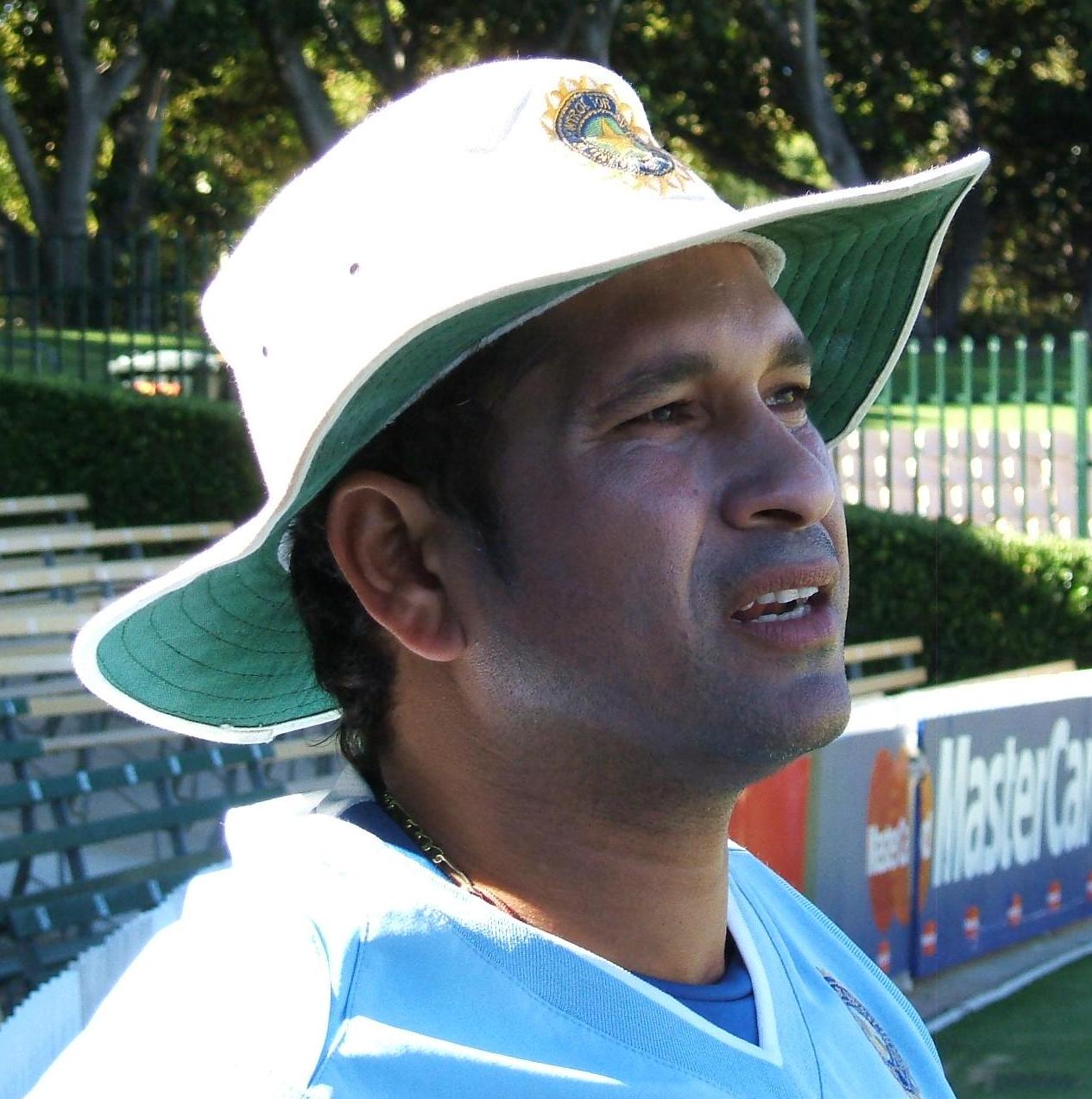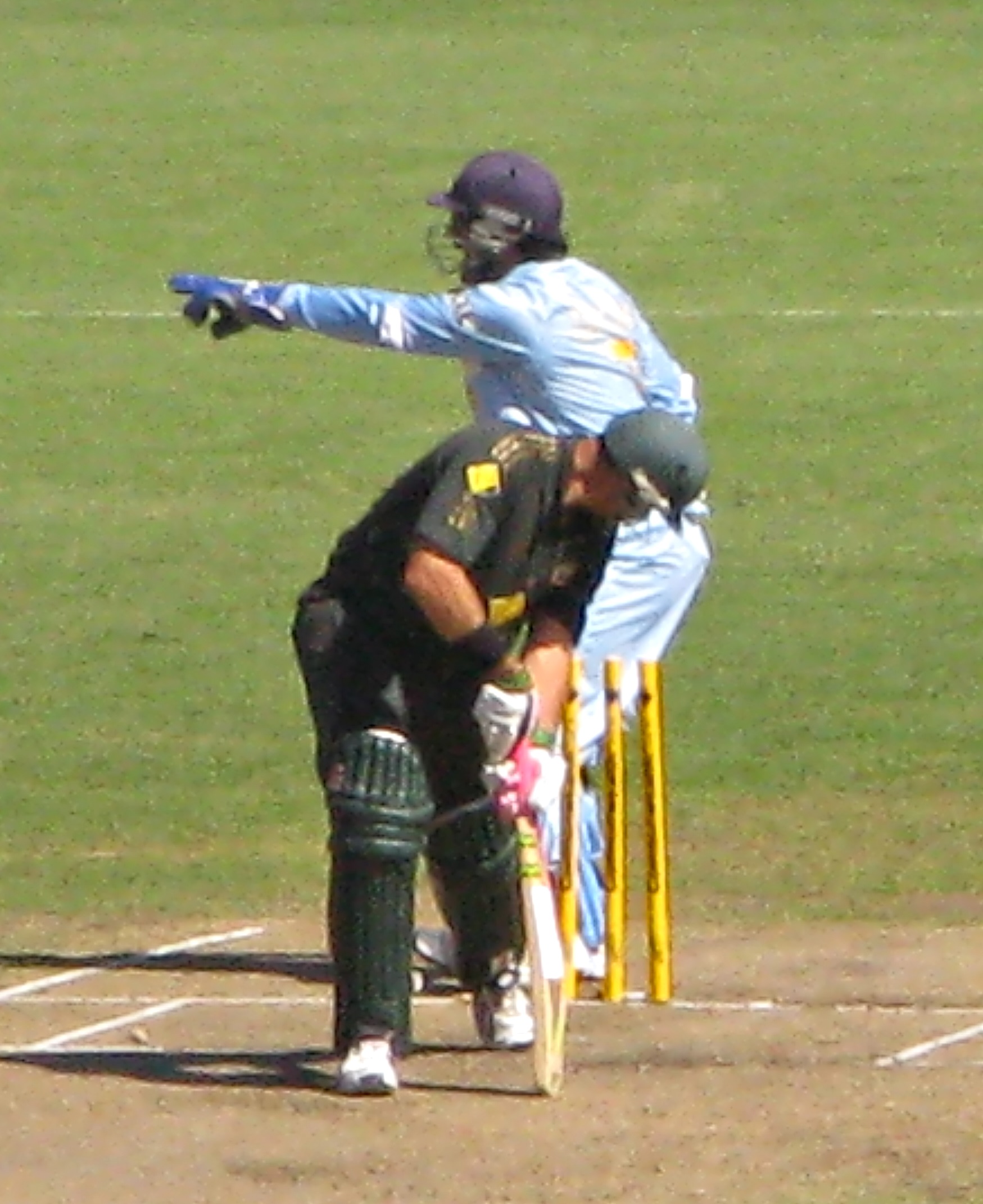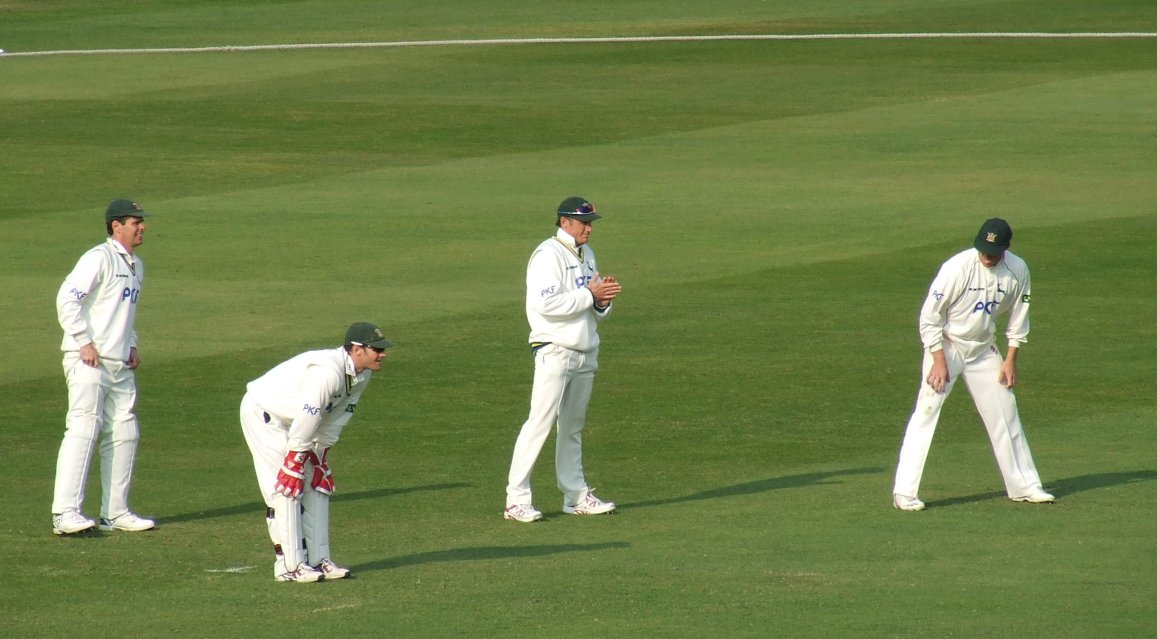|
Leonard Moon
2nd Lieutenant Leonard James Moon (9 February 1878 – 23 November 1916) was an officer in the British Army who died of wounds suffered in World War I. Before the war, he was an amateur first-class cricketer who played for Middlesex County Cricket Club from 1899 to 1909, and in four Test matches for England in 1905–06. He was born in London and died near Salonika. Moon also played football for Corinthians and his brother Billy was an England international goalkeeper. Moon was a right-handed top-order batsman and an occasional wicket-keeper. He played in 96 first-class matches. He scored 4,166 career runs at an average of 26.87 runs per completed innings with a highest score of 162 as one of seven centuries. As a fielder and keeper, he held 72 catches and completed 13 stumpings. Career Leonard Moon was born at 45, Portsdown Road, London (his parents' home) on 9 February 1878. He was the son of William Moon, a Lincoln's Inn Fields solicitor. Moon was educated at Westminster ... [...More Info...] [...Related Items...] OR: [Wikipedia] [Google] [Baidu] |
Kensington
Kensington is a district in the Royal Borough of Kensington and Chelsea in the West End of London, West of Central London. The district's commercial heart is Kensington High Street, running on an east–west axis. The north-east is taken up by Kensington Gardens, containing the Albert Memorial, the Serpentine Gallery and John Hanning Speke, Speke's monument. South Kensington and Gloucester Road, London, Gloucester Road are home to Imperial College London, the Royal College of Music, the Royal Albert Hall, Natural History Museum, London, Natural History Museum, Victoria and Albert Museum, and Science Museum, London, Science Museum. The area is also home to many embassies and consulates. Name The Manorialism, manor of ''Chenesitone'' is listed in the Domesday Book of 1086, which in the Old English language, Anglo-Saxon language means "Chenesi's List of generic forms in place names in Ireland and the United Kingdom, ton" (homestead/settlement). One early spelling is ''Kesyngton ... [...More Info...] [...Related Items...] OR: [Wikipedia] [Google] [Baidu] |
Batting (cricket)
In cricket, batting is the act or skill of hitting the ball with a bat to score runs and prevent the loss of one's wicket. Any player who is currently batting is, since September 2021, officially referred to as a batter (historically, the terms "batsman" and "batswoman" were used), regardless of whether batting is their particular area of expertise. Batters have to adapt to various conditions when playing on different cricket pitches, especially in different countries - therefore, as well as having outstanding physical batting skills, top-level batters will have quick reflexes, excellent decision-making and be good strategists. During an innings two members of the batting side are on the pitch at any time: the one facing the current delivery from the bowler is called the striker, while the other is the non-striker. When a batter is out, he is replaced by a team-mate. This continues until the end of the innings, which in most cases is when 10 of the team members are out ... [...More Info...] [...Related Items...] OR: [Wikipedia] [Google] [Baidu] |
Charterhouse School
(God having given, I gave) , established = , closed = , type = Public school Independent day and boarding school , religion = Church of England , president = , head_label = Head , headmaster = Alex Peterken , r_head_label = Second Master , r_head = Andrew Turner , chair_label = Chair of Governors , chairman = Vicky Tuck , founder = Thomas Sutton , fundraiser = , specialist = , address = Charterhouse Road , city = Godalming , county = Surrey , country = United Kingdom , postcode = GU7 2DX , local_authority = , dfeno = 936/6041 , urn = 125340 , ofsted = , staff = ≈55 ... [...More Info...] [...Related Items...] OR: [Wikipedia] [Google] [Baidu] |
Cricket
Cricket is a bat-and-ball game played between two teams of eleven players on a field at the centre of which is a pitch with a wicket at each end, each comprising two bails balanced on three stumps. The batting side scores runs by striking the ball bowled at one of the wickets with the bat and then running between the wickets, while the bowling and fielding side tries to prevent this (by preventing the ball from leaving the field, and getting the ball to either wicket) and dismiss each batter (so they are "out"). Means of dismissal include being bowled, when the ball hits the stumps and dislodges the bails, and by the fielding side either catching the ball after it is hit by the bat, but before it hits the ground, or hitting a wicket with the ball before a batter can cross the crease in front of the wicket. When ten batters have been dismissed, the innings ends and the teams swap roles. The game is adjudicated by two umpires, aided by a third umpire and match referee ... [...More Info...] [...Related Items...] OR: [Wikipedia] [Google] [Baidu] |
Westminster School
(God Gives the Increase) , established = Earliest records date from the 14th century, refounded in 1560 , type = Public school Independent day and boarding school , religion = Church of England , head_label = Head Master , head = Gary Savage , chair_label = Chairman of Governors , chair = John Hall, Dean of Westminster , founder = Henry VIII (1541) Elizabeth I (1560 – refoundation) , address = Little Dean's Yard , city = London, SW1P 3PF , country = England , local_authority = City of Westminster , urn = 101162 , ofsted = , dfeno = 213/6047 , staff = 105 , enrolment = 747 , gender = BoysCoeducational (Sixth Form) , lower_age = 13 (boys), 16 (girls) , upper_age = 18 , houses = Busby's College Ashburnham Dryden's Grant's Hakluyt's Liddell's Milne's Purcell's Rigaud's Wren's , colours = Pink , public ... [...More Info...] [...Related Items...] OR: [Wikipedia] [Google] [Baidu] |
Lincoln's Inn Fields
Lincoln's Inn Fields is the largest public square in London. It was laid out in the 1630s under the initiative of the speculative builder and contractor William Newton, "the first in a long series of entrepreneurs who took a hand in developing London", as Sir Nikolaus Pevsner observes. The original plan for "laying out and planting" these fields, drawn by the hand of Inigo Jones, was said still to be seen in Lord Pembroke's collection at Wilton House in the 19th century, but its location is now unknown. The grounds, which had remained private property, were acquired by London County Council in 1895 and opened to the public by its chairman, Sir John Hutton, the same year. The square is today managed by the London Borough of Camden and forms part of the southern boundary of that borough with the City of Westminster. Lincoln's Inn Fields takes its name from the adjacent Lincoln's Inn, of which the private gardens are separated from the Fields by a perimeter wall and a large ga ... [...More Info...] [...Related Items...] OR: [Wikipedia] [Google] [Baidu] |
Portsdown Road
Randolph Avenue is a street in Maida Vale in London. Located in the City of Westminster, it is a long Avenue (landscape), avenue running from north to south. The southern end is located in Little Venice near to the Paddington branch of the Grand Union Canal. The street runs northwards, crossing Clifton Gardens, Sutherland Avenue (near to its junction with Warrington Crescent), Elgin Avenue and Carlton Vale. The road then continues as Randolph Gardens until it meets Kilburn Park Road. The Edgware Road runs directly parallel to Randolph Avenue to the east. The street was part of an ambitious plan for the area laid out by the architect George Gutch in the 1820s to accommodate the expanding population of the capital. Development took several decades with many buildings constructed in the first half of the Victorian era, particularly the 1860s. For much of its existence it was known as Portsdown Road, but was renamed in 1939. It is a largely residential street. The southern end of the ... [...More Info...] [...Related Items...] OR: [Wikipedia] [Google] [Baidu] |
Stumped
Stumped is a method of dismissing a batsman in cricket, which involves the wicket-keeper putting down the wicket while the batsman is out of his ground. (The batsman leaves his ground when he has moved down the pitch beyond the popping crease, usually in an attempt to hit the ball). The action of stumping can only be performed by a wicket-keeper, and can only occur from a legitimate delivery (i.e. not a no-ball), while the batsman is not attempting a run; it is a special case of a run out. Being "out of his ground" is defined as not having any part of the batsman's body or his bat touching the ground behind the crease – i.e., if his bat is slightly elevated from the floor despite being behind the crease, or if his foot is on the crease line itself but not completely across it and touching the ground behind it, then he would be considered out (if stumped). One of the fielding team (such as the wicket-keeper himself) must appeal for the wicket by asking the umpire. The appea ... [...More Info...] [...Related Items...] OR: [Wikipedia] [Google] [Baidu] |
Caught (cricket)
Caught is a method of dismissing a batsman in cricket. A batsman is out caught if the batsman hits the ball, from a legitimate delivery, with the bat, and the ball is caught by the bowler or a fielder before it hits the ground. If the ball hits the stumps after hitting the wicket-keeper, If the wicket-keeper fails to do this, the delivery is a "no ball", and the batsman cannot be stumped (nor run out, unless he attempts to run to the other wicket.) If the catch taken by the wicket-keeper,then informally it is known as caught behind or caught at the wicket. A catch by the bowler is known as caught and bowled. This has nothing to do with the dismissal bowled but is rather a shorthand for saying the catcher and bowler are the same player. (The scorecard annotation is usually ''c. and b.'' or ''c&b'' followed by the bowler's name.) Caught is the most common method of dismissal at higher levels of competition, accounting for 36,190 Test match dismissals between 1877 and 2012, wh ... [...More Info...] [...Related Items...] OR: [Wikipedia] [Google] [Baidu] |
Fielding (cricket)
Fielding in the sport of cricket is the action of fielders in collecting the ball after it is struck by the striking batter, to limit the number of runs that the striker scores and/or to get a batter out by either catching a hit ball before it bounces, or by running out either batter before they can complete the run they are currently attempting. There are a number of recognised fielding positions, and they can be categorised into the offside and leg side of the field. Fielding also involves preventing the ball from going to or over the edge of the field (which would result in runs being scored by the batting team in the form of a boundary). A ''fielder'' or ''fieldsman'' may field the ball with any part of his body. However, if while the ball is in play he wilfully fields it otherwise (e.g. by using his hat), the ball becomes dead and five penalty runs are awarded to the batting side, unless the ball previously struck a batter not attempting to hit or avoid the ball. ... [...More Info...] [...Related Items...] OR: [Wikipedia] [Google] [Baidu] |
Century (cricket)
In cricket, a century is a score of 100 or more runs in a single innings by a batsman. The term is also included in "century partnership" which occurs when two batsmen add 100 runs to the team total when they are batting together. A century is regarded as a landmark score for batsmen and a player's number of centuries is generally recorded in their career statistics. Scoring a century is loosely equivalent in merit to a bowler taking a five-wicket haul, and is commonly referred to as a ton or hundred. Scores of more than 200 runs are still statistically counted as a century, although these scores are referred to as double (200–299 runs), triple (300–399 runs), and quadruple centuries (400–499 runs), and so on. Accordingly, reaching 50 runs in an innings is known as a half-century; if the batsman then goes on to score a century, the half-century is succeeded in statistics by the century. Scoring a century at Lord's earns the batsman a place on the Lord's honours boar ... [...More Info...] [...Related Items...] OR: [Wikipedia] [Google] [Baidu] |
Innings
An innings is one of the divisions of a cricket match during which one team takes its turn to bat. Innings also means the period in which an individual player bats (acts as either striker or nonstriker). Innings, in cricket, and rounders, is both singular and plural; this contrasts with baseball and softball in which the singular is "inning". Origin The earliest known record of the term concerns a match in August 1730 at Blackheath, Kent between a Kent side and London Cricket Club. The London-based ''St. James Evening Post'' reported: "'Twas thought that the Kentish champions would have lost their honours by being beat at one innings if time had permitted". Usage in cricket An innings is one of the divisions of a match during which one team takes its turn to bat, and is said to be "in to bat". Innings is the subject of Law 13 in the ''Laws of Cricket''. * In a first-class match, there are up to four innings with each team due to bat twice (in practice, this is not always the c ... [...More Info...] [...Related Items...] OR: [Wikipedia] [Google] [Baidu] |










